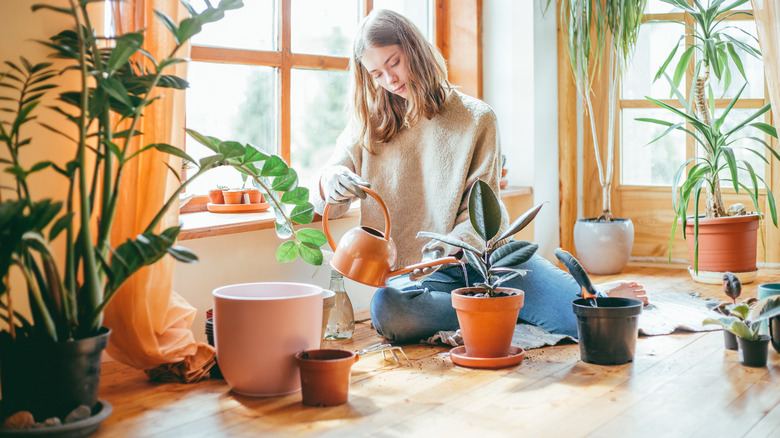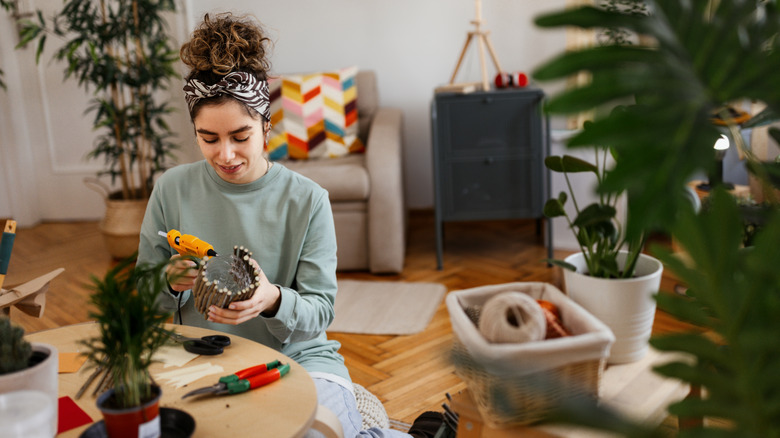Prevent Planters From Scratching Your Precious Wood Floors With An Easy Glue Hack
Flowerpots, especially those at the terracotta/ceramic/concrete end of the spectrum, can cause some trouble when used indoors. As pretty as they can be, they often lack the civility to sit on your hardwood floors, glass tabletops, and fine furniture without scratching the surface up rather badly. Worse, combinations like a ceramic pot on a glass table can result in a broken table, even one made of tempered glass. The answer is in your craft room: a few dabs of hot glue.
If you know what "LRF" means, you probably figured out this hack from the headline alone. "Little rubber feet" is a term that came to prominence in the information technology abbrevi-verse decades ago to refer to those little rubber or plastic bumpers, usually black, that are on the bottoms of most electronic gear to prevent shocks and to keep things from getting scratched up. (It was later abbreviated because computer types haven't yet met anything they'd rather pronounce than abbreviate.) If you're sitting at a desktop computer right now, look at the bottom of your keyboard, near the corners. Those are LRF.
With hot glue, you can create the same effect, essentially making LRF for any pot that threatens to do a number on your furniture or floors. And it's not just the surfaces you're protecting; you'll need this and other strategies to prevent your terracotta pots from cracking as well.
How to do it, and what you could do instead
Your craft room isn't the only place you'll find hot glue guns these days. These useful gadgets have found their way into many professions and pastimes, and now it might be time to see them in the greenhouse as well. Hot-gluing these large custom planters and making little hot-glue feet for your flowerpots is a straightforward business. Just squeeze four or so dollops of glue, equal sized and spaced roughly equally, around the bottom of your pot. Let the glue cool for a moment so that it won't easily stick to anything else but is still pliable, and then sit your pot down on a smooth surface and squish the feet a little to level it. Voila! You have LHGF.
This is quick and easy — two things that hot glue excels at — but that doesn't necessarily make this the only (or best) solution for scratch-happy pot-bottoms. (Dibs on that as a bluegrass band name.) Those felt or cork pads for furniture legs and furniture sliders on the bottom of your flower pots will also work. Rubber cement (remember that stuff from childhood?) works as well, as do the clear plastic trays used to keep water from getting everywhere. Or try a sacrificial trivet — a fancy name for anything you can stick under there without caring if it gets scratched up. Avoid glass for this last one; as we said above, mixing ceramic and glass is sometimes no trivet-al matter. Ahem.

